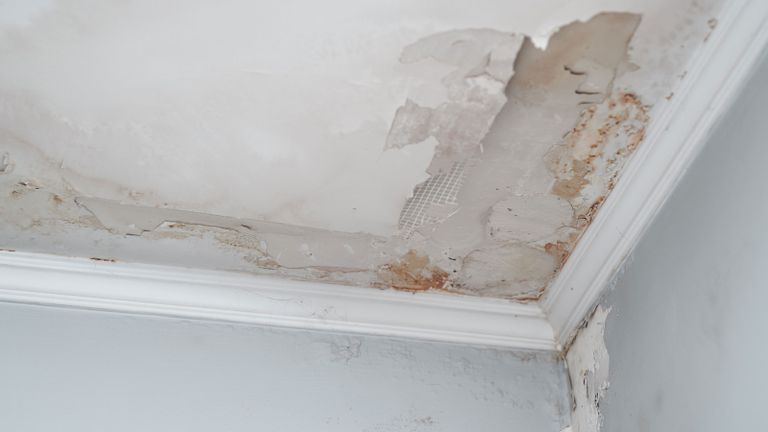Do's & Don'ts of Water Damage.
Do's & Don'ts of Water Damage.
Blog Article
The content down below involving Preventing Fires and Water Damage In Your Home is especially attention-grabbing. Try it and make your own ideas.

Water offers life, yet water intrusion on some components where it's not intended to be can lead to damages and trouble. If the water seeps into your framework, it can peel off away the surface and erode the product's structure. Mold and also mildew also prosper in a wet setting, which can be dangerous for your as well as your household's wellness. In addition, homes with water damage smell old as well as moldy.
Water can originate from several resources like tropical storms, floodings, ruptured pipes, leaks, as well as drain problems. It's better to have a working knowledge of security preventative measures if you have water damage. Here are a few standards on just how to manage water damages.
Do Prioritize House Insurance Coverage Protection
Seasonal water damage can originate from floods, seasonal rains, and wind. There is also an event of an abrupt flood, whether it came from a faulty pipeline that unexpectedly ruptures into your house. To safeguard your home, obtain residence insurance coverage that covers both acts of God such as all-natural catastrophes, as well as emergencies like busted plumbing.
Don't Neglect to Turn Off Utilities
When calamity strikes and also you remain in a flood-prone area, switch off the primary electrical circuit. Switching off the power stops
electrical shocks when water can be found in as water functions as a conductor. Do not fail to remember to shut off the main water line valve as a method to prevent even more damages.
Keep your furnishings steady as they can relocate around and also trigger additional damages if the floodwaters are getting high.
Do Keep Proactive and Heed Climate Alerts
If you live in a location afflicted by floodings, remain aggressive and also ready at all times. Listen to the news as well as discharge cautions if you live near a body of water like a creek, lake, or river .
Do Not Neglect the Roofing System
Your roofing contractor should take treatment of the malfunctioning gutters or any various other signs of damages or weakening. An examination will certainly stop water from streaming down your wall surfaces as well as saturating your ceiling.
Do Focus On Little Leakages
A burst pipe does not happen in a vacuum cleaner or overnight. There are red flags that can draw your interest and show to you some weakened pipelines in your home. Indicators of red flags in your pipelines include gurgling paint, peeling wallpaper, water streaks, water discolorations, or dripping sounds behind the wall surfaces. There are indicators that the pipeline will burst. If you see these indications, don't await a rise. Repair as well as inspect your plumbing fixed prior to it leads to substantial damages to your residence, finances, and also a personal headache.
Don't Panic in Case of a Burst Pipeline
Timing is vital when it comes to water damage. If a pipeline bursts in your home, immediately closed off your primary water valve to cut off the resource as well as avoid even more damages. Call a trusted water damage restoration professional for help.
Water gives life, yet water breach on some parts where it's not intended to be can result in damages and aggravation. In addition, residences with water damage odor old and stuffy.
Seasonal water damages can come from floods, seasonal rainfalls, and wind. Indicators of red flags in your pipes consist of bubbling paint, peeling off wallpaper, water streaks, water stains, or trickling noises behind the wall surfaces. If a pipe ruptureds in your home, quickly shut off your major water valve to reduce off the source and also prevent more damages.
Some Do's & Don't When Dealing with a Water Damage
DO:
Make sure the water source has been eliminated. Contact a plumber if needed. Turn off circuit breakers supplying electricity to wet areas and unplug any electronics that are on wet carpet or surfaces Remove small furniture items Remove as much excess water as possible by mopping or blotting; Use WHITE towels to blot wet carpeting Wipe water from wooden furniture after removing anything on it Remove and prop up wet upholstery cushions for even drying (check for any bleeding) Pin up curtains or furniture skirts if needed Place aluminum foil, saucers or wood blocks between furniture legs and wet carpet Turn on air conditioning for maximum drying in winter and open windows in the summer Open any drawers and cabinets affected for complete drying but do not force them open Remove any valuable art objects or paintings to a safe, dry place Open any suitcases or luggage that may have been affected to dry, preferably in sunlight Hang any fur or leather goods to dry at room temperature Punch small holes in sagging ceilings to relieve trapped water (don't forget to place pans beneath!); however, if the ceiling is sagging extremely low, stay out of the room and we'll take care of it DO NOT:
Leave wet fabrics in place; dry them as soon as possible Leave books, magazines or any other colored items on wet carpets or floor Use your household vacuum to remove water Use TV's or other electronics/appliances while standing on wet carpets or floors; especially not on wet concrete floors Turn on ceiling fixtures if the ceiling is wet Turn your heat up, unless instructed otherwise

I ran across that write up on Keeping Your Home Safe This Holiday Season when perusing the internet. Do you know somebody who is sincerely interested in the subject? Do not hesitate to share it. We value reading our article about Fire And Water Damage Prevention.
Report this page